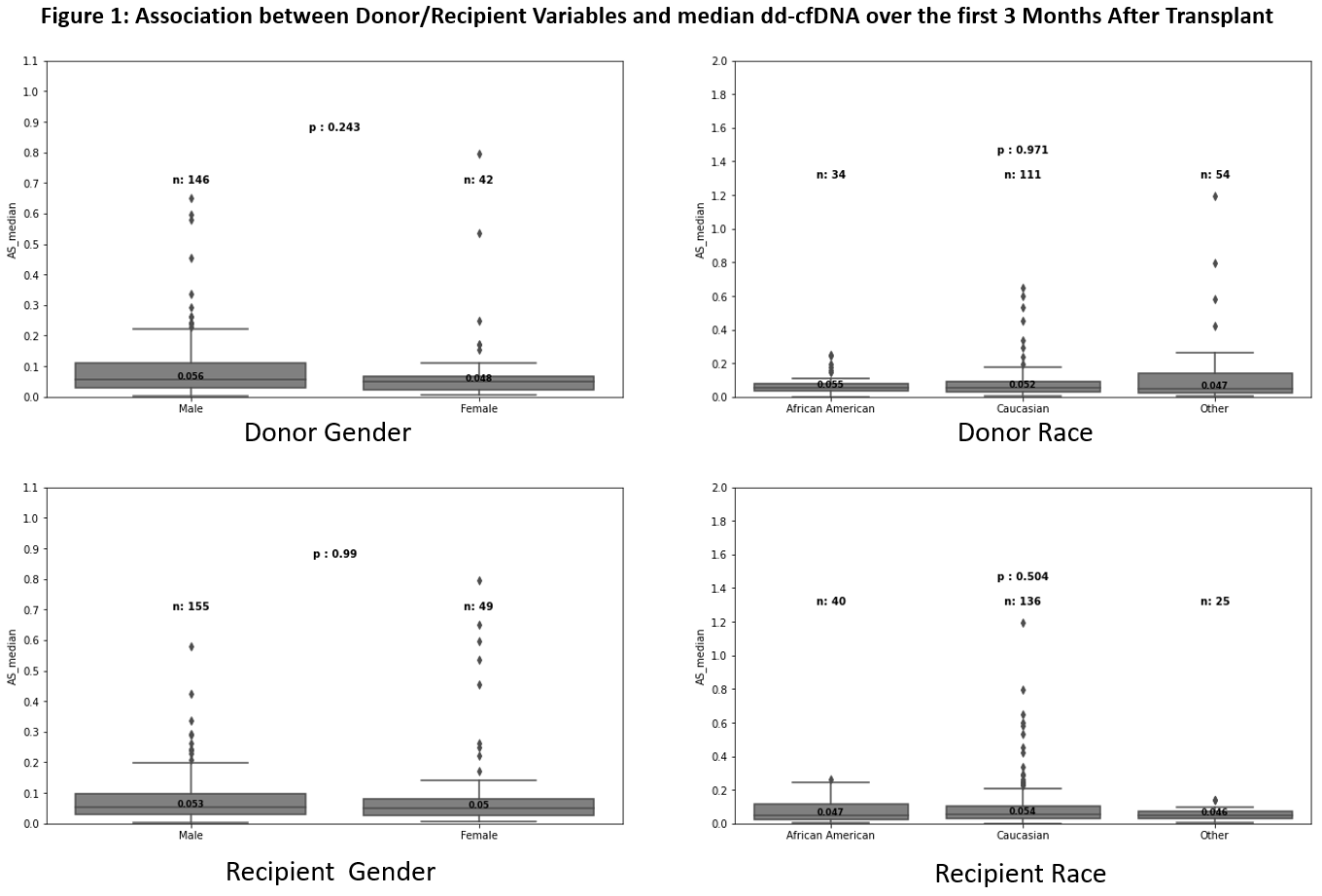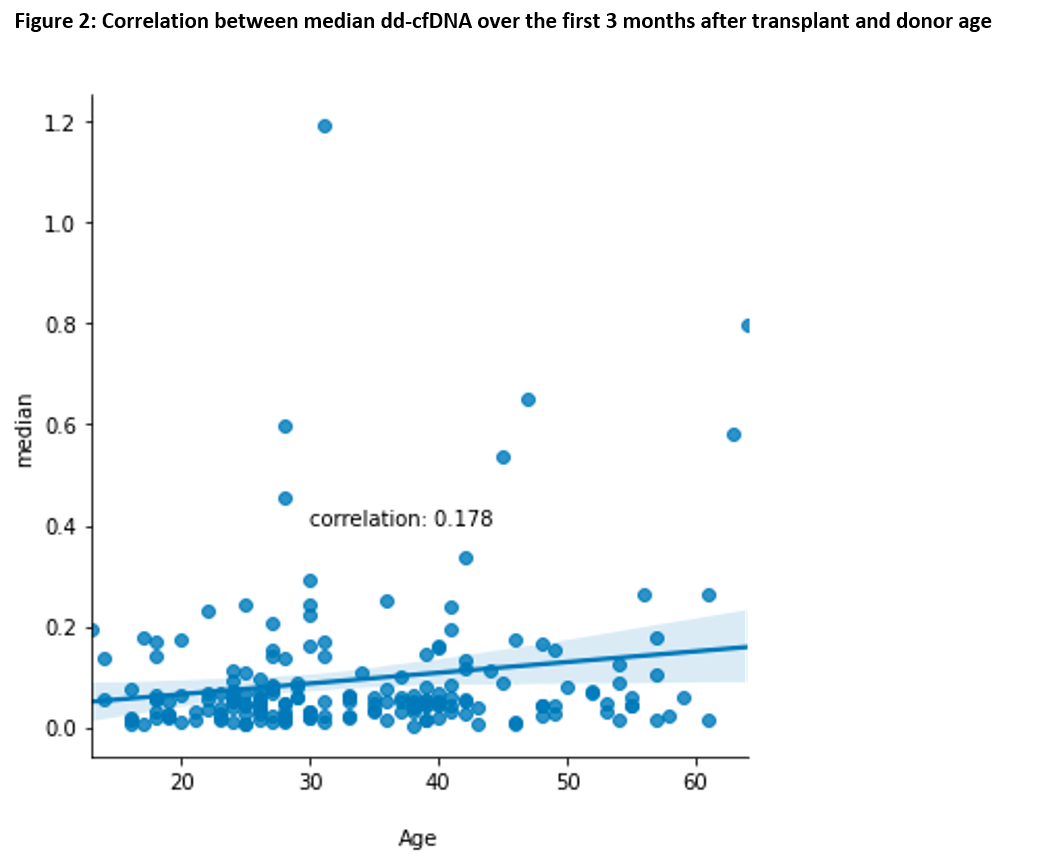Impact of Donor and Recipient Characteristics on Early Post-Transplant Donor-Derived Cell-Free DNA (dd-cfDNA) Scores
A. Alam1, J. Zeng2, J. Teuteberg3, S. Hall1
1Baylor University Medical Center, Dallas, TX, 2CareDx, Brisbane, CA, 3Stanford University, Stanford, CA
Meeting: 2022 American Transplant Congress
Abstract number: 236
Keywords: Donors, unrelated, Heart transplant patients, Multivariate analysis, Outcome
Topic: Clinical Science » Heart » 63 - Heart and VADs: All Topics
Session Information
Session Name: Heart and VADs: All Topics II
Session Type: Rapid Fire Oral Abstract
Date: Monday, June 6, 2022
Session Time: 3:30pm-5:00pm
 Presentation Time: 3:50pm-4:00pm
Presentation Time: 3:50pm-4:00pm
Location: Hynes Room 210
*Purpose: Dd-cfDNA (AlloSure, CareDx; Brisbane, CA) has been demonstrated to detect allograft injury after heart transplantation in a large and diverse patient cohort in the United States; however, little is known about the association between donor and recipient demographic characteristics and dd-cfDNA results in the early post-transplant period.
*Methods: Among heart transplant recipients enrolled in the SHORE registry, we identified clinically stable patients with longitudinal dd-cfDNA results and no history of rejection within the first post-transplant year. Univariate and multivariate analysis was used to evaluate the impact of donor/recipients variables on the median dd-cfDNA results over the first 3 months after transplant (3mAS). Not all donor/recipient variables were available for every analysis performed.
*Results: Among the 609 patients meeting criteria for inclusion in our analysis, 189 had results within the first 3 months; 3mAS was 0.053% (IQR: 0.028 – 0.098). No differences were observed in 3mAS when patients were stratified by the gender/race of either donor or recipient [Figure 1]. No correlation with recipient age was seen, however, a weak but statistically significant correlation was observed between 3mAS and donor age (Pearson’s r: 0.178, p = 0.014) [Figure 2], though 3mAS for the oldest recipients (aged 51 – 70) remained relatively low (0.047%, IQR: 0.029-0.083). In a multivariate model including all donor and recipient variables (gender, age, and race), none of the covariates significantly predicted 3mAS, and overall model performance was poor (R2 = 0.059).
*Conclusions: Our investigation did not identify clinically significant associations between donor/recipient demographics (age, race, or gender) and early post-transplant dd-cfDNA levels in stable heart transplant recipients. The impact of other donor/recipient characteristics merits additional study; however, our findings support the notion that clinically significant elevations in the early post-transplant period represent either active or evolving alloimmune injury.
To cite this abstract in AMA style:
Alam A, Zeng J, Teuteberg J, Hall S. Impact of Donor and Recipient Characteristics on Early Post-Transplant Donor-Derived Cell-Free DNA (dd-cfDNA) Scores [abstract]. Am J Transplant. 2022; 22 (suppl 3). https://atcmeetingabstracts.com/abstract/impact-of-donor-and-recipient-characteristics-on-early-post-transplant-donor-derived-cell-free-dna-dd-cfdna-scores/. Accessed December 20, 2025.« Back to 2022 American Transplant Congress


